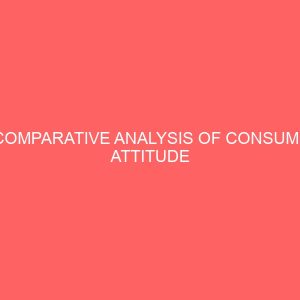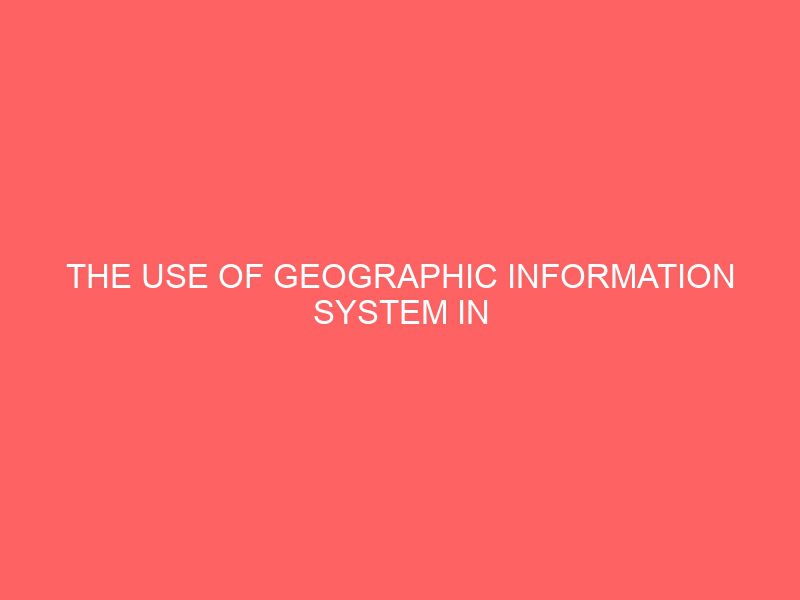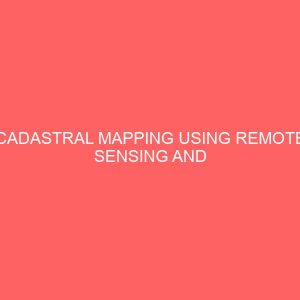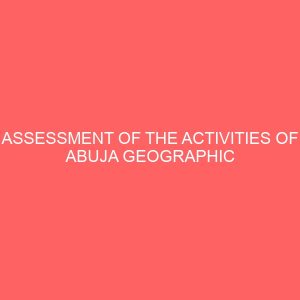Description
ABSTRACT
This study identifies suitable sites appropriate for solid waste landfill in the vicinity of JosNorth using Remote Sensing and of Geographic Information Systems GIS. Remote Sensing was used for generating a landuse map of the study area and GIS was used in integrating various layers of information, practically having the same spatial reference, to produce a suitability map for solid waste landfill. The task required a number of multiple criteria, and each having some level of importance. In order to accommodate the significant role of each criteria, the Multicriteria Decision Analysis MCDA, particularly Analytic Hierarchy Process AHP was employed. For this purpose, nine 9 input map layers including settlements, roads, wetlands, slope, geology, soil, landuse, floodplains, and surface water were prepared and used as constraint criteria for determining suitability. Weighted overlay tool in ArcGIS 9.3 was used for the final suitability map, and it yielded conformable results. Out of 291km2 of the entire study area, 20.8km2 was found to be suitable for siting sustainable landfill. The map layers related with geology, hydrogeology, and land use are based on available data. Because they are not specifically prepared for landfill site selection purpose, the information provided from these maps were not quite satisfactory. It is understood that rather than general purpose lithological map, the maps showing distribution, thickness, and characteristics of the unconsolidated superficial deposits are more helpful. Thus, for landfill siting studies, special purpose engineering geological and hydrogeological maps are required. The slope layer needs to be refined to exclude those areas along the ridges and the hill tops.
1.1 BACKGROUND TO THE STUDY
Solid waste management is an important element in public health and environmental protection Yesilnacar Cetin, 2005. Its main purpose is to provide hygienic, efficient and economic collection, transportation, treatment and/or disposal of solid wastes without polluting the atmosphere, soil or water resources, and the management strategy should address the issue of aesthetic UNDP, 1997 .
The growth in municipal solid waste generation the world over has been reported to be a consequence of urbanization, industrialization, and population growth, together with improved living standard Rao, Brinda, Harikrihna, 2007. It is estimated that the United Kingdom produces 35 million tonnes of municipal solid waste annually Koshy, Emma, Sarah, Tim Kelly, 2007 and in the United States of America, more than 140 million tonnes of municipal waste is generated annually, while Japan and Germany generates 50.2 million and 43.5 million tonnes respectively, in 1993 Sakai, et al., 1996.
The situation in Africa is similar to other parts of the world. Nigeria with a population growth rate of about 2.8 per annum and an urban growth rate of about 5.5 per annum Imam, Mohammed, Wilson Cheeseman, 2008 generates about 20 kg of Solid waste per capita every year Olaleye Sangodina, 2000. Also, solid waste generated by an average Nigerian per day is estimated to be around 0.49kg while commercial centres and households contribute almost 90 of the total waste found in urban centres Solomon, 2009.
According to a United Nations Development Programme survey of 151 cities from around the world, the second most serious problem that city dwellers face after unemployment is insufficient solid waste disposal UNDP, 1997. Thus, a properly sustainable waste management practice is highly needed to handle the situation.
In developed countries, the issue of solid waste is properly handled through the effective management process of waste reduction, reuse, recycle and proper disposal. However, in developing countries, municipal solid waste management system is either not efficient or still at the rudimentary stage and as such solid waste generated has become a threat to the environment Solomon, 2009. For instance, in Jos North, waste is generally dumped inside culverts and rivers, and at the onset of raining season flood becomes a common scene in the city of Jos Wuyep, 2011. As for dumping waste in the River Dilimi, a major drainage of the Jos plateau, Abdullahi 2008 reveals the presence of heavy metals in vegetables crops planted along the river, as beyond the limit of exposure stipulated by WHO and attributes this to waste dumped into the river in addition to runoff of fertilizer from farm lands. Thus proper disposal of waste is urgently needed to achieve sustainable waste management.
According to Rao, et al., 2007 to achieve a sustainable solid waste management system, policies and techniques such as waste recycling, reuse, waste reduction, thermal treatment, landfilling etc, must be in place. Out of these techniques, landfilling is the most common method adopted in many countries Yesilnacar Cetin, 2005. Landfill is a system for solid waste disposal onto or into land, taking social, economic and environmental matters into account Rao, et al., 2007. Sanitary landfilling is the technique of disposing of refuse on land creating no nuisance or danger to public health or safety by applying the principles of engineering to restrict the refuse within a smallest practical volume and to cover it with a layer of earth at more frequent periods as may be required UNHABITAT, 2010.
In Nigeria, open or uncontrolled dumping is largely used as waste disposal method but the benefit of sanitary landfill over the Open dumping methods cannot be overemphasized because it is pollution free thereby eliminating any health or environmental risk that may result from solid waste disposal UNHABITAT, 2010.However, municipal landfill siting is becoming increasingly difficult considering that closeness of site to residential area, river, water channel or other fragile ecosystem could lead to adverse environmental pollution and degradation as well as health hazards UNHABITAT, 2010. According to Sakai et al. 1996 a properly designed and wellmanaged landfill can be hygienic and relatively inexpensive while a poorly designed or poorly managed landfill can create a number of environmental problems such as ground water contamination, windblown litters, and attraction of vermin in addition to uncontrolled emission of landfill gases such as methane. Such problems have resulted into the nonacceptance of landfills by communities Yesilnacar Centin, 2005.
Therefore, to protect the ecosystem from being disturbed and to ensure healthy environment for the survival of man, it becomes necessary to carefully locate landfills on environmentally suitable locations Sakai et al., 1996. Selection of sites for landfill involves an extensive evaluation process in order to identify the optimal available disposal location. This location must satisfy basic government regulations, and also take into cognizance how to minimize important factors like health, economic, environmental and social cost Siddiqui et al., 1996. In fact, different researchers have used varying criteria for site selection purposes due mainly to the fact that different criteria apply to different regions Stinnette, 1996; Sadek Fadel, 2006.
It is evident that, many factors must be incorporated into landfill siting decisions and Geographic Information System GIS together with Remote Sensing is ideal for this kind of preliminary studies due to their ability to manage large volumes of spatial data from a variety of sources. GIS is practically effective in storing, retrieving and analyzing, and also displays information according to user defined specifications Siddiqui et al., 1996. According to Kao Lin 1996 large amount of spatial data can be processed using GIS and thus, it potentially saves time that would normally be spent in selecting an appropriate site using manual processing approach.
Multicriteria Decision Analysis MCDA can be used to deal with the difficulties that decisionmakers encounter in handling large amounts of complex information. The principle of the method is to divide the decision problems into smaller more understandable parts, analyze each part separately and then integrate the parts in a logical manner Malczewski, 1997.
The integration of GIS and MCDA provides a reliabl e platform for solving the landfill site selection problem, because GIS provides efficient manipulation and presentation of the data and MCDA supplies consistent ranking of the potential landfill areas based on a variety of criteria. Hence the need for this study to apply GIS in the selection of suitable landfill sites for sustainable waste management in Jos North Local Government Area LGA of Plateau State.








Reviews
There are no reviews yet.